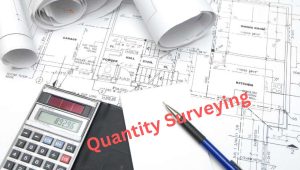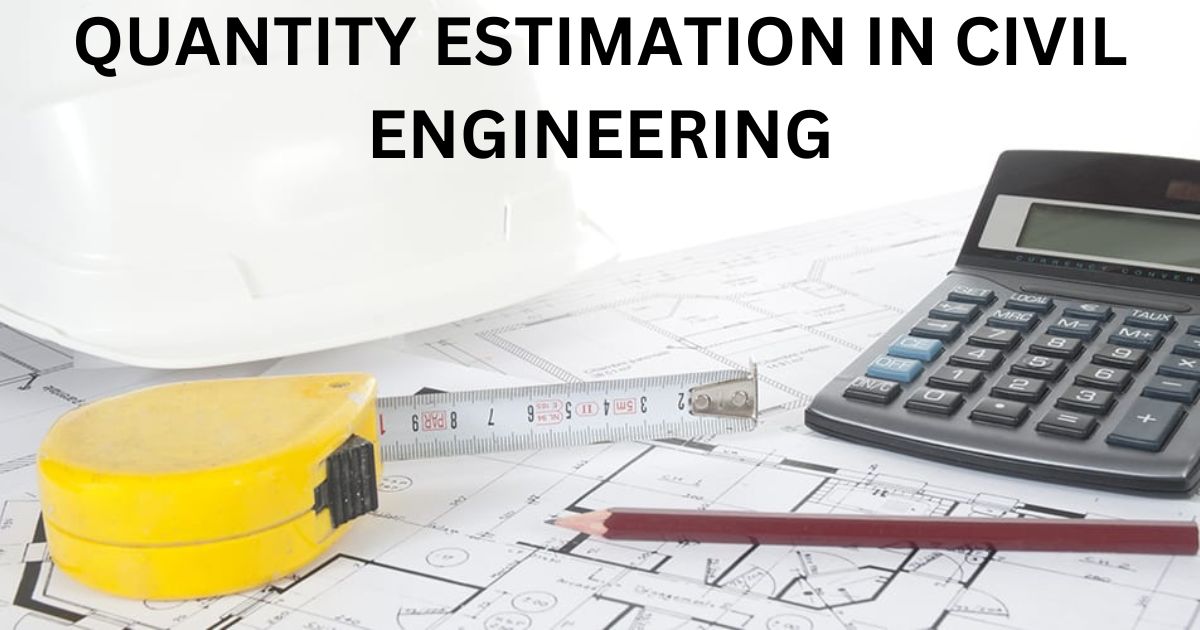Quantity estimation plays an important role in construction that focuses on managing project costs. The Quantity surveyors estimate costs, prepare detailed documents, assist in tendering, and monitor expenses. They handle changes, collect payments, and ensure financial control. They play an important role in project cost management.

Responsibilities of a Quantity Surveyor
The responsibilities of a quantity surveyor include.
1. Cost Estimation.
By making Estimate the costs of construction projects by analyzing project specifications and determining the quantities of materials, labor, and equipment required.
2. Bill of Quantities.
Preparing a detailed document called the “Bill of Quantities”, that lists all the items required for the project and their quantities. This serves as a basis for tendering and obtaining accurate bids from contractors.
3. Tendering and Procurement.
Assisting in tendering by preparing tender documents, evaluating contractors’ bids, and providing client recommendations.
4. Cost Control.
Monitoring and controlling costs throughout the construction project. Tracking actual expenditures against the budget, identifying deviations, and taking corrective measures to keep the project financially on track.
5. Variation and Change Management.
Assessing the impact of variations and changes on cost and time. Negotiating with contractors to reach fair agreements and maintaining proper documentation for all variations and modifications.
6. Valuation and Payment.
Certifying and valuing the work done by contractors. Visiting the construction site, measuring completed works, and preparing payment certificates based on assessments to facilitate the release of funds.
7. Final Account and Project Closeout.
Preparing the final account that includes all costs incurred during the construction phase. Settling any outstanding claims or disputes related to payments and ensuring the resolution of financial matters before project closeout.
How to Calculate Quantity Estimation?
Quantity estimation involves calculating the quantities of materials, labor, and equipment required for a construction project. The process of calculating quantity estimates typically involves the following steps.
Review the Project Documents.
Thoroughly examine the project specifications, drawings, and any other relevant documents to understand the scope of work and requirements.
Breakdown of Components.
Identify the different components or items that make up the project. This could include elements such as concrete, steel, bricks, piping, electrical fixtures, etc.
Takeoff Measurements.
Measure and quantify the dimensions of each component or item using appropriate units (e.g., length, area, volume, etc.). This can be done manually with measuring tools or using software programs that facilitate digital takeoff.
Apply Appropriate Formulas and Factors.
Based on the project specifications and industry standards, apply appropriate formulas and factors to convert the measurements into quantities. For example, in concrete estimation, you would calculate the volume of concrete required by multiplying the length, width, and height of the structure and factoring in the desired concrete cover and wastage allowance.
Material Conversion and Adjustment.
Convert the quantities to the required units (e.g., converting volume to cubic meters or weight to kilograms) and make adjustments for any specific requirements or allowances. Consider factors such as wastage, overlaps, cutting losses, or any other project-specific considerations.
Consider Multiple Trades.
If the project involves multiple trades (e.g., electrical, plumbing, HVAC), perform quantity estimation separately for each trade based on their respective requirements and specifications.
Summarize and Document.
Compile the quantities of all the components and trades into a comprehensive document, typically known as the “Bill of Quantities”. The BOQ provides a detailed breakdown of all the estimated quantities for tendering and procurement purposes.
Types of Quantity Survey.
Quantity surveying involves tasks such as estimating project costs, creating detailed quantity lists, planning project expenses, managing procurement and tendering, finding cost-saving options, controlling project costs, administering contracts, and preparing final financial statements.
Conclusion
Quantity surveying manages and controls construction project costs. Quantity surveyors estimate costs, create quantity lists, plan expenses, manage procurement and contracts, find cost-saving options, and prepare final financial statements. They ensure projects are executed efficiently and cost-effectively.
